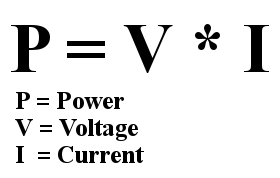Power is the amount of electrical energy transformed into another type of energy (heat, light or work) per second. Power is an important concept because it is what allows our electric circuit to do something. For example, if we created a circuit with a battery and a resistor, the resistor will convert the electrical energy to heat (or thermal) energy. All resistors also have a maximum power rating that they can handle therefore to ensure that we do not damage the resistors in a circuit we will need to know how to calculate power. Power is calculated by multiplying the voltage by the current and is measured in Watts.

Most of the low-cost resistors that we can get from online retailers are rated at 1/4 (or 0.25) Watts so we will assume that the resistors we are using for the projects in this book are rated at that 1/4 Watt. Now let's say in our project we are...



